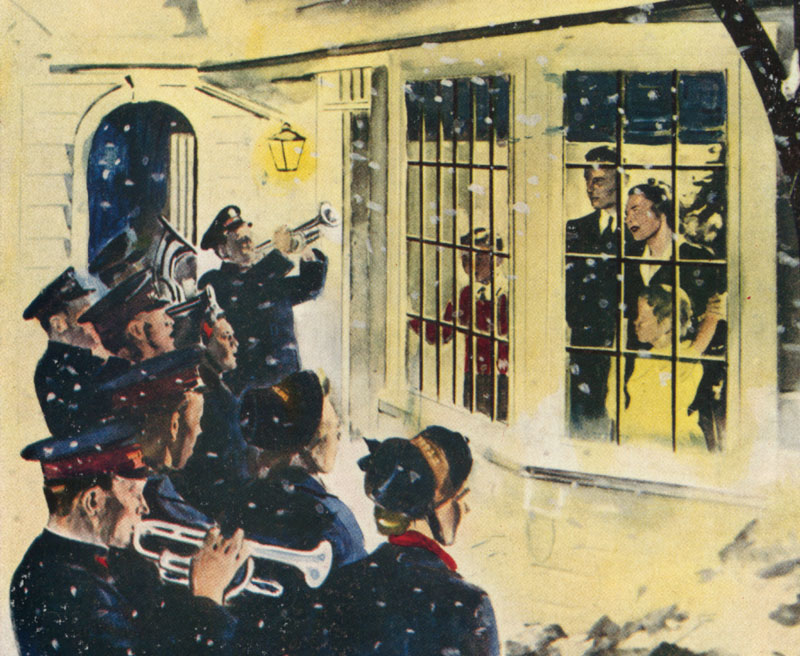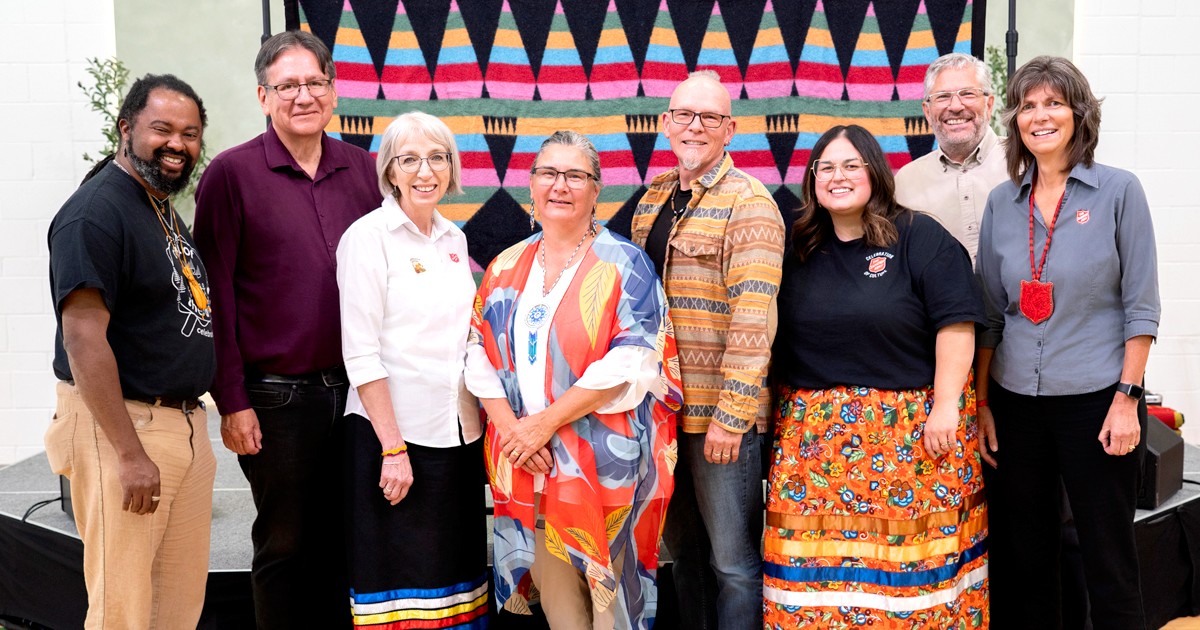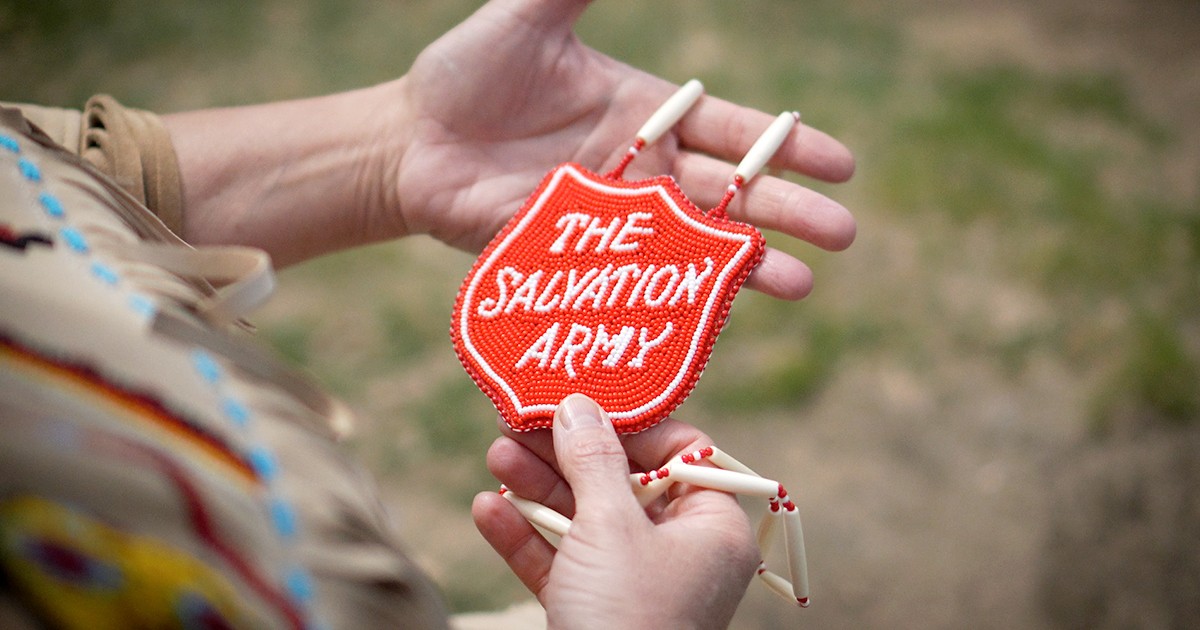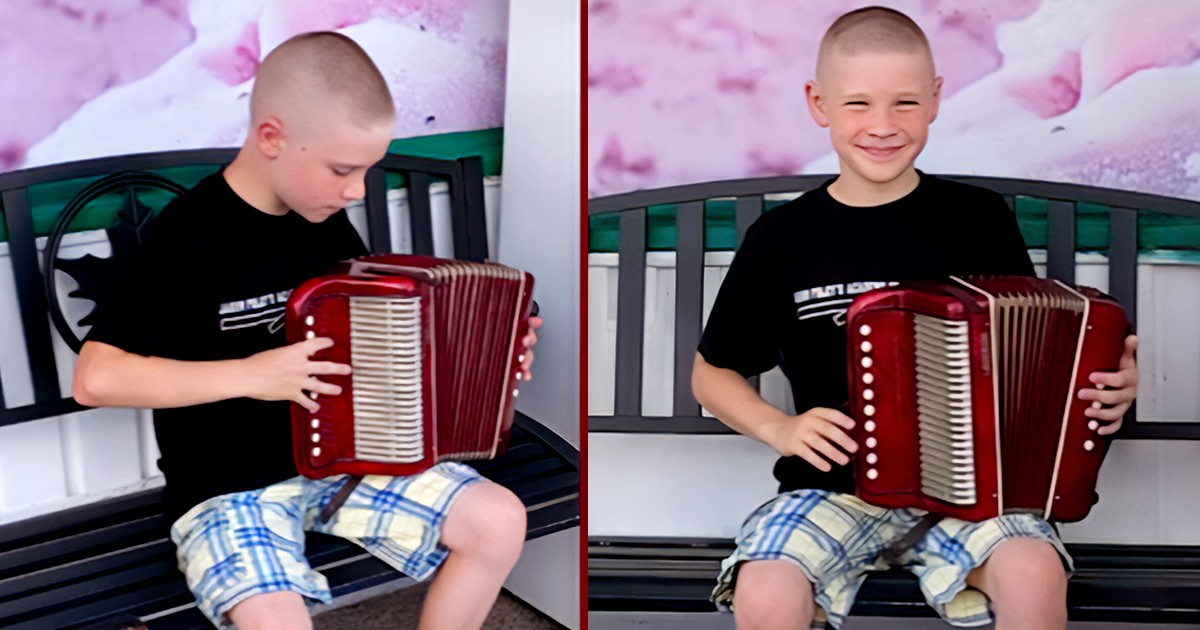It Came Upon the Midnight Clear
Major Ken Smith, corps officer, Meadowlands, Hamilton, Ont.
Written by Edmund H. Sears in 1849, It Came Upon the Midnight Clear is probably the only Christmas carol composed for political reasons. At the time, mounting tensions between the northern and southern states were threatening to tear the United States apart. In addition, ordinary workers were facing unprecedented upheaval due to the Industrial Revolution, while many fortune seekers were caught up in the fury of the 1849 California gold rush. Amid all the prevailing social and political unrest, Sears wrote this hymn to remind his fellow citizens that peace was possible, even amid the “woes of sin and strife” that affected their daily lives.
As a young boy, I learned that this carol was a particular favourite of my maternal grandmother. I was never certain why, although I long suspected that it had something to do with her experience growing up during the First World War. She later married an Englishman who had immigrated to Canada following service in that conflict, and came to know something of the physical and mental trauma he had to endure for the rest of his life because of it.
Whether due to her husband’s wartime experiences or the stress of living through the Great Depression, somehow my grandmother grew to love the sentiments expressed in this carol—words that speak about “peace on the earth, goodwill to men.” Though verse two speaks of the world’s suffering, and how “man, at war with man, hears not the love song” of the angels, the final verse cites the prophetic hope that one day peace will reign “over all the earth.”
I can certainly understand this carol’s appeal for someone growing up in the context of war and worldwide turmoil. Perhaps that’s why it continues to speak to me today. In an age where we are daily bombarded with frightening news headlines and humanity seems to face an uncertain future, this carol reminds me that we can still take comfort in the angels’ song by looking to the Lord Jesus Christ, who is the Prince of Peace.
The First Noel
Craig Lewis, territorial secretary for music and gospel arts
It doesn’t truly feel like Christmas to me until I have sung The First Noel. Actually, it isn’t so much singing the carol as it is playing it—with a Salvation Army band, in a big cathedral, accompanied by a huge pipe organ and 3,000 voices. As a member of the Canadian Staff Band, I have participated in the Toronto Star’s annual carol concert for 22 years. Held at the historic St. Paul’s Anglican Church in Toronto, the traditional concert always finishes with a slow, majestic and powerful rendition of this carol. The choirmaster drags out every beat of music, and those of us in the trombone section save just a little extra for the final refrain. It’s a glorious moment! As the final notes echo in the cavernous space, I sense the spirit of Christmas: Christ with us.
Along with the power and emotion of that experience every year, I also appreciate the inclusiveness of this carol. It starts with the poor shepherds in the fields and ends with the Wise Men bearing gifts. It reminds me that when God sent his Son, it wasn’t just for one segment of the population—it was for all. Rich or poor, simple or wise, from tent to castle; no one is excluded. It says something special that the angel of the Lord went to the shepherds—the lowest members of society—with the good news (see Luke 2). God doesn’t want any of us to miss the miracle of the Incarnation.
In this inclusiveness, there is unity. “Then let us all with one accord sing praises to our heavenly Lord.” No sound is more wonderful than when we unite our voices in such praise. When you sing The First Noel this Christmas, whether in a magnificent setting or in a moment of quiet reflection, it is my prayer that you will consider the gift of Jesus Christ—a gift meant to be shared with the world.
O Come, All Ye Faithful
David Rowsell, London Citadel, Ont.
O Come, All Ye Faithful has been one of my favourite carols since my first Christmas playing in the senior band at Corner Brook Temple in Newfoundland and Labrador. How I enjoyed carolling in the neighbourhood! I still remember playing this carol while standing under the streetlights, with snow lightly falling. I also remember the congregation singing the refrain as a stand-alone chorus: “O come let us adore him, Christ the Lord!”
Years later, after completing my music and education degrees and serving as bandmaster at St. John’s Temple, N.L., I was inspired to use this refrain in a composition entitled A Christmas Intrada, published in 2004. I chose the fanfare style to express the jubilation surrounding the birth of the Christ Child. This Christmas, it will be the opening track on the 2017 territorial Christmas CD.
I have played O Come, All Ye Faithful every Christmas for 51 years. It will be played and sung all around the world again this year. It’s amazing to think how this carol has blessed so many with its message of love and adoration. I, for one, feel blessed to still be involved in Army banding with its outreach ministry, and to have such wonderful memories of sharing the Christmas message. This carol always reminds me that Christmas is about the Christ Child who we come to worship and adore.
Huron Carol
Major Cathie Harris, Heritage Park Temple, Winnipeg
I clearly remember the first time I heard the Huron Carol. It was during a Sunday service at Heritage Park Temple in Winnipeg in the mid-1980s. Then-Cadet Ken Smith played his own arrangement on the piano, and its hauntingly beautiful melody seeped into my soul. When I went home, I looked up the words again and was deeply moved by them.
Since then, this carol has become a significant part of Christmas for me. In fact, its meaning has deepened recently in the context of the Truth and Reconciliation Commission and The Salvation Army’s deep desire to reconcile with our Indigenous sisters and brothers.
The first Canadian carol, it was written about 375 years ago by Jean de Brébeuf, a Jesuit missionary, to express the Christmas story to the Huron people in a way relevant to their lives. The Huron words, written to a French melody, were translated years later into both French and English. Jesus Ahatonhia (Jesus, he is born) blends at least three strands of our Canadian identity. That, in itself, is significant.
This carol is incarnational: “The Word became flesh and lived among us, and we have seen his glory, the glory as of a father’s only son, full of grace and truth” (John 1:14 NRSV). Brébeuf expressed the birth of Jesus in a setting well known to the Hurons: “ ’Twas in the moon of wintertime when all the birds had fled … Within a lodge of broken bark the tender Babe was found, a ragged robe of rabbit skin enwrapped his beauty round.” Jesus Christ was born for all—all peoples, all languages, all cultures. What better way to signify this than in a carol for Christmas?
In September I was privileged to be part of the Celebration of Culture: A Journey of Reconciliation weekend at Pine Lake Camp in Alberta. As we worshipped together, Indigenous and non-Indigenous, singing The Drum Doxology with Cheryl Bear, the power of music to celebrate unity and difference was a spiritual “aha” moment for me.
This Christmas as I sing the Huron Carol I will pray that Jesus, who became flesh, will unify us as we “come kneel before the radiant Boy who brings you beauty, peace and joy.”
Hark! The Herald Angels Sing
Captain Nicholas Samuel, corps officer, Cambridge Citadel, Ont.
Traditions are an interesting thing. For generations, Salvationist musicians have stood in the streets and in malls playing Christmas carols, using the old red carol books, in which Hark! The Herald Angels Sing was number one—so that’s where we began. But ever since the books were put into alphabetical order, it’s interesting to discover how many bands now start at number 36!
Charles Wesley’s gift for word-painting immediately evokes Luke 2:13, when the “great company of the heavenly host appeared with the angel, praising God,” inviting the shepherds (and us) to join in the celebrations. Wesley’s understanding of “peace to those on whom his favour rests” (Luke 2:14) is given in the first few lines: “God and sinners reconciled.” God’s mercy for all means that we can know his peace through Jesus Christ, our Messiah, who was “born in Bethlehem”—thought to be the most unlikely place, for the most unlikely people, even if the prophecies had foretold it (see Micah 5).
The second verse guides us through the person of Jesus: “Christ, by highest heaven adored, Christ, the everlasting Lord.” For generations, the prophets spoke of the coming Messiah. With “Late in time behold him come,” Wesley reflects on Isaiah 7, reminding us that Jesus was the long-awaited One: “The virgin will conceive and give birth to a son, and will call him Immanuel” (Isaiah 7:14). Through the Incarnation, Jesus reveals the mystery of the Godhead, making the triune God visible. Jesus is Immanuel, our God with us.
The final verse guides us through the purpose of Jesus: “Light and life to all he brings.” The fulfilment of the prophecies in the life, death and Resurrection of Jesus brings home the truth that this grace-and-mercy gift was and is offered to all of us: he was born that we may be born again and receive eternal life.
Regardless of the number in the carol book, I ask, what better way to begin the Christmas season than with a note of praise, glory and truth, declaring the person and the purpose of the Christ Child, and inviting other people to join in our song?










Leave a Comment